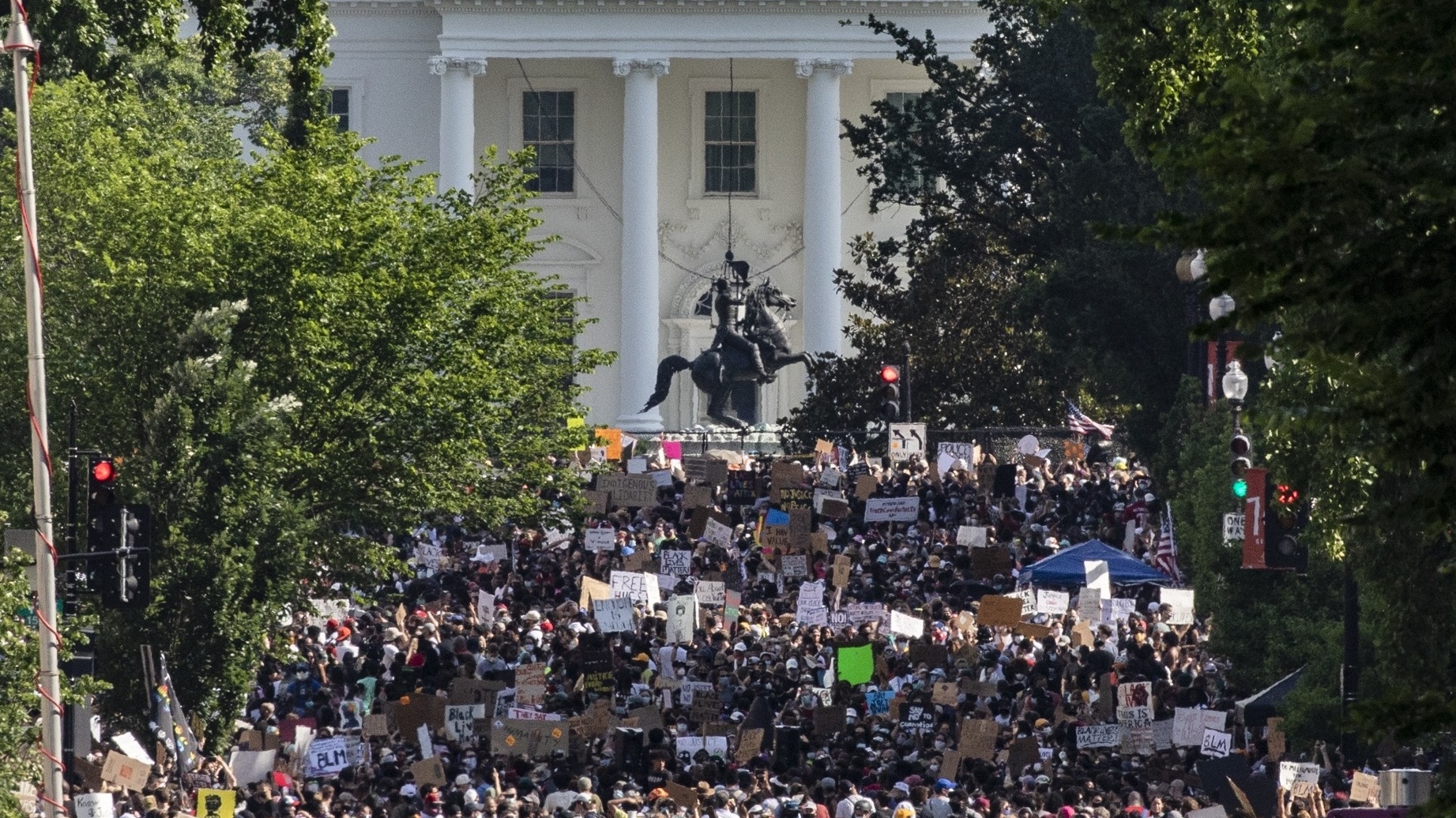The National Bureau of Economic Research has released a study concluding that protests following the killings of Breonna Taylor, George Floyd and Ahmaud Arbery did not cause an increase in coronavirus infections despite concerns raised about increased contact and congregating in crowds.
The 60-page study examines newly collected data on protests in 315 of the largest U.S. cities and estimates how demonstrations affected COVID-19 infection rates. The study found that contrary to concerns relayed in the media, the cities with large protests "saw an increase in social distancing behavior for the overall population relative to cities that did not."
"We find no evidence that urban protests reignited COVID-19 case growth during the more than three weeks following protest onset," the study stated. "We conclude that predictions of broad negative public health consequences of Black Lives Matter protests were far too narrowly conceived."
For days after protests began, news outlets ran segments with experts who expressed concern that the protests were damaging national efforts to stop the spread of the virus.
The researchers behind the study said it was the first to "empirically examine the linkage between the 2020 Black Lives Matter protests and the spread of COVID-19."
While the study acknowledges that the protests did result in a decrease in social distancing, it explained that virus transmission could've been avoided if the people who took to the streets across the country were wearing masks and keeping some amount of distance from each other.
In most cases, the study said the estimated longer-run effect of the protests was negative, though not statistically distinguishable from zero. More importantly, the researchers found that the protests had little effect on virus transmission within the larger populations of their counties and people who did not participate in protests.
The study does note that the data may be skewed because the protest attendees were largely younger, so they may have been asymptomatic and may not have gotten tested.
The researchers behind the study are from Bentley University, San Diego State University and the University of Colorado Denver.
They used anonymous cell phone tracking data from SafeGraph, "which provides an anonymized population movement dataset of nearly 45 million smartphone devices aggregated to the census block, county, and state levels." This same data has been used by the CDC to determine whether people in the United States are social distancing.
The study focuses primarily on cities with populations over 100,000 and tracks data from the first protests in Minneapolis after Floyd's death.
Recent data from New York City has backed up the study's findings. Politico reported Wednesday that medical officials said they were not seeing a spike in COVID-19 cases, hospitalizations, or deaths since the onset of the protests.
The city has seen steadily declining numbers since the start of June, and health experts said the fact that protests were outside may have helped reduce the spread of the virus.
“So, we certainly were looking for what the protest impact would be, but much more what the impact would be a Phase One on our overall health dynamics? And as you saw with today's indicators, pretty good as of this hour. We are never out of the woods, but what we've seen so far is encouraging,” Mayor Bill de Blasio said during a press conference.

